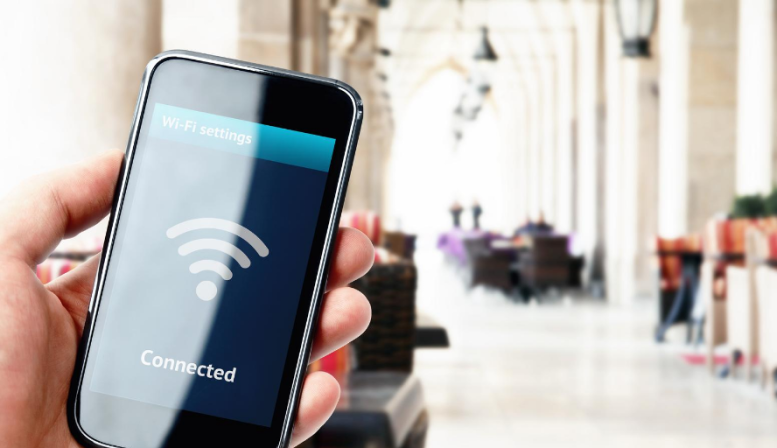Why you need to crash test your Wi-Fi before your upcoming conference

Wi-Fi at an event is not an option: it is an essential.
Nothing is worse than planning a mind-blowing event, only to have the entire audience distracted by how poor the Wi-Fi connection is.
From the perspective of the attendees, not being able to connect is beyond frustrating: it is simply unacceptable. Reliable, fast and free Wi-Fi should be seamlessly available for everyone at the event.
In many venues (from large conference centres to hotels) the Wi-Fi network is built to handle roughly 20 to 30 connections at any given time. The speed drops dramatically if the users are doing more than simply surfing the web or checking their email.
We are going to outline how to figure out how much bandwidth you will need for your event, then talk to the venue to ensure you have enough high-speed Wi-Fi for all your attendees, speakers, and team.
What do you need?
Let’s start by talking about data: What are Mbps and how much do you need?
Broadband speed is measured in 'megabits per second' which is shortened to Mbps (or MB). Bits are tiny units of data, and a megabit represents a million of them. The speedier your attendees will need their internet to be, the higher the number of Mbps you’re going to require.
For example, just checking your email or Facebook requires a very low speed (1-2 Mbps) whereas downloading apps or sharing files will require a lot more (10-20 Mbps).

Basic guide to download bandwidth:
- Email, basic web browsing, most social media, audio chat: 1-2 Mbps
- YouTube, Skype, SoundCloud, FaceTime or video chat : 3.5-10 Mbps
- Streaming video, downloading apps, file transfering: 10 Mbps
- Conference management software, large file transfers: 10-20 Mbps
Now that we have a rough idea about how data works, you are going to need to factor in how many users are going to need to be connected.
Let’s imagine that you are running an event that is going to have 70 attendees. You tell the venue that they need to have enough Wi-Fi for 70 users. They suggest supplying you with 7/Mbps connection, which you agree to. At the event, however, the internet is far too slow, and people are mildly irritated and disappointed.
What went wrong?
A common mistake event organizers can make is to only plan using the number of attendees coming to their conference. You need to factor in that people other than the attendees are going to connect as well, like:
- Team members and volunteers
- Speakers, agents, trainers, and hosts
- Press
- Outside help, like caterers and technicians
Your number of people needing to be connected just jumped from 70 to 100.
You also needed to factor in how many of these people will have multiple devices (laptops, smartphones, tablets, and wearable tech) they will want to connect. Almost instantly, your Wi-Fi needs doubled or tripled.
Your original figure 70 was too low, in fact you needed enough Wi-Fi for 300 devices, meaning your Wi-Fi speed should have been closer to 25/Mbps, a whooping 3.5x more than what is was supplied, leaving everyone at your event with a very slow connection.
The formula for predicting how many connections you will need is pretty straight forward:

(# of Attendees + # Other People at the Event) x Multiple Devices = # of connections needed
Once you know how many connections you need, you can use the PSAV Bandwidth Estimator for a rough estimate of what Mbsp you will need:

If you don’t have this tool handy, you can roughly work out that you will need 10 Mbsp per 100 connections (this is a slight overshot, but it is better to have a little more than a little less.)
Asking the right questions
You’ve got to ask the right questions when you are talking to the vendor at your desired venue to make sure that you are going to have enough bandwidth for your event.
You’re going to have to go beyond simply asking ‘Is there Wi-Fi?”
Here is a list of key questions to ask:
- What is the maximum capabilities of the bandwidth? Will it be able to handle peak time (like a coffee break) in the most high traffic places (e.g. function spaces, and public areas)? If it is not enough for the amount of connection you are going to need, is it possible that they can mount Wi-Fi access points in these areas?
- Does the venue have a big enough pipe (total bandwidth coming to the venue) that can provide your event with the total bandwidth it needs?
- What backup resources does the venue have if the Wi-Fi is to slow or stops working?
- Does the venue have an on-site support staff who can problem solve at the event in case something goes wrong? If they don’t, can they bring in off-site audiovisual professional for the event?
- Can the support staff set up sub-separate networks (VLANs-Virtual Local Area Network) if necessary?
If you get the feeling that the vendor is trying to baffle you with lots of heavy tech jargon, or they seem like they are too busy to fully explain what they are going to do, or they really don’t know what they are talking about: they are a risky choice.
In this case, consider bringing in an off-site audiovisual professional that you know and trust who can visit the venue and talk with the vendor and support staff on your behalf.
3 Top Tips:
- Always encourage attendees to download any applications or update their devices before they arrive at the event, as these will seriously slow down your Wi-Fi speed.
- 5 Ghz (gigahertz) is better than 2.4 Ghz when it comes to bandwidth. It is far reaching, zips right through walls and provides a much more consistent and reliable connection. Forward-thinking venues are using both 2.4 Ghz and 5 Ghz at the same time.
- Speedtest.net tests the speed of Internet connections. Use the Speedtest app, which is the mobile version of Speedtest.net when you are checking out the venus to get a rough idea of the venue’s technical infrastructure.
Do you have a tip or piece of advice you could offer other event planners about how to avoid catastrophe when it comes to internet connection for your event? We love to hear it and share it with our audience. Contact us.



